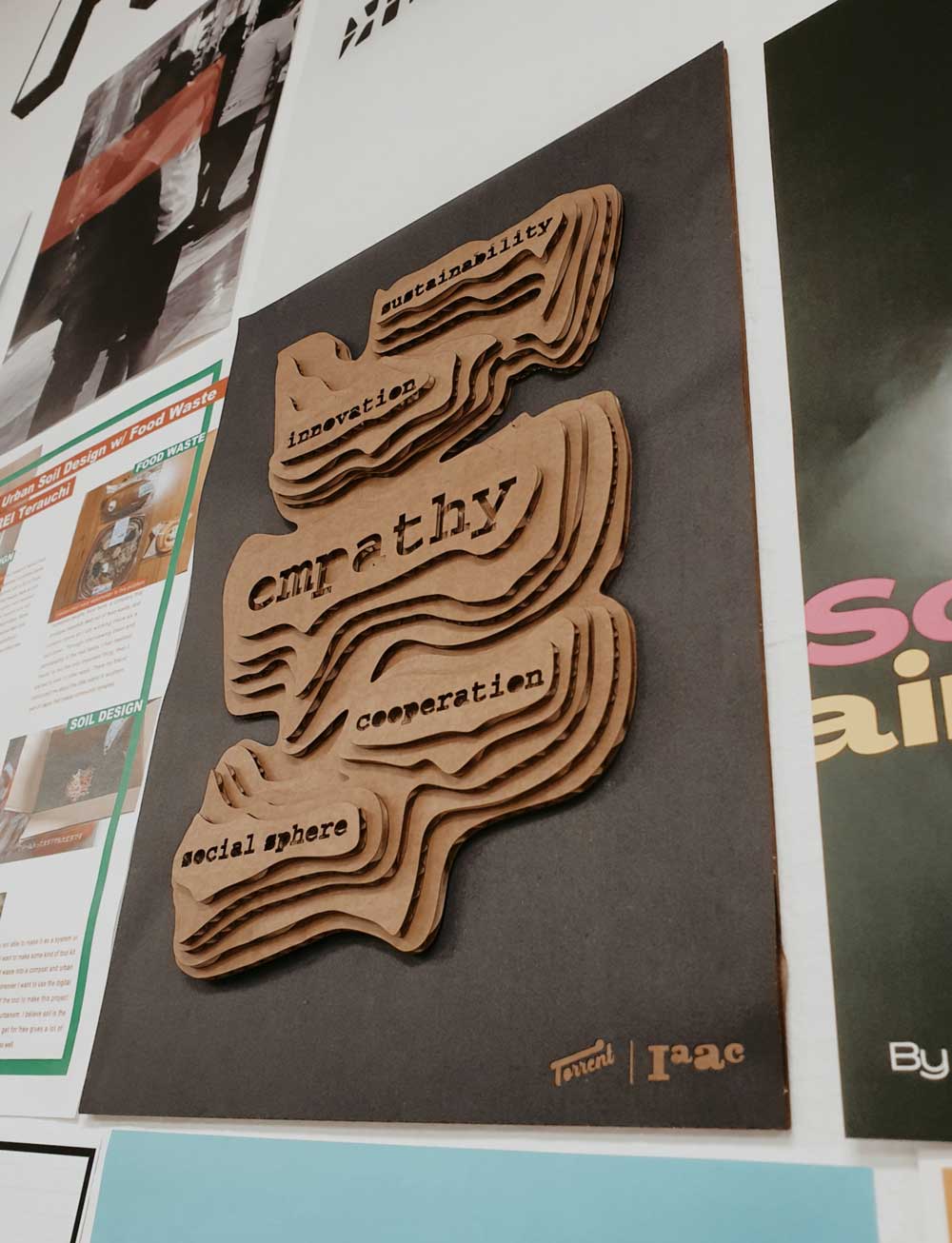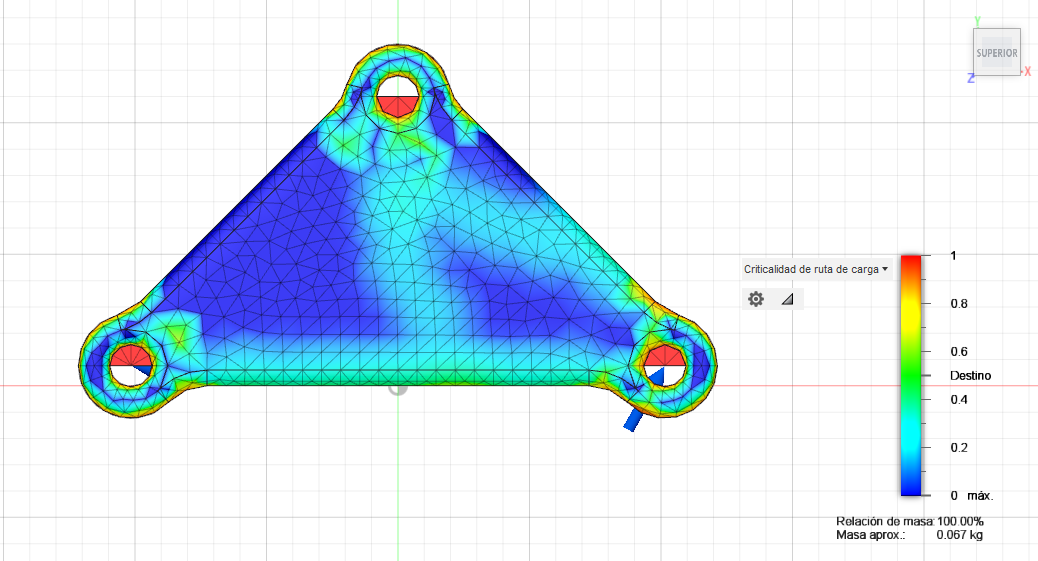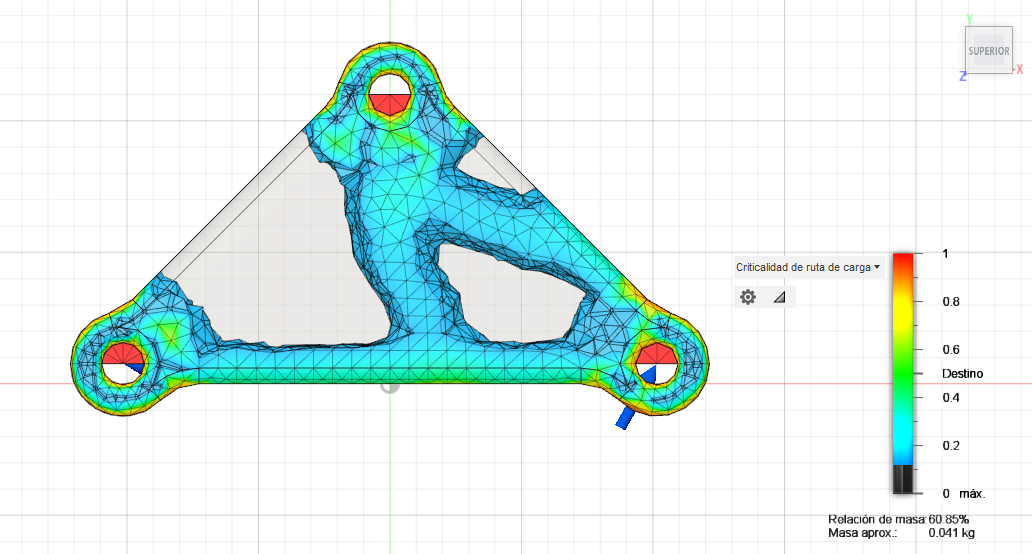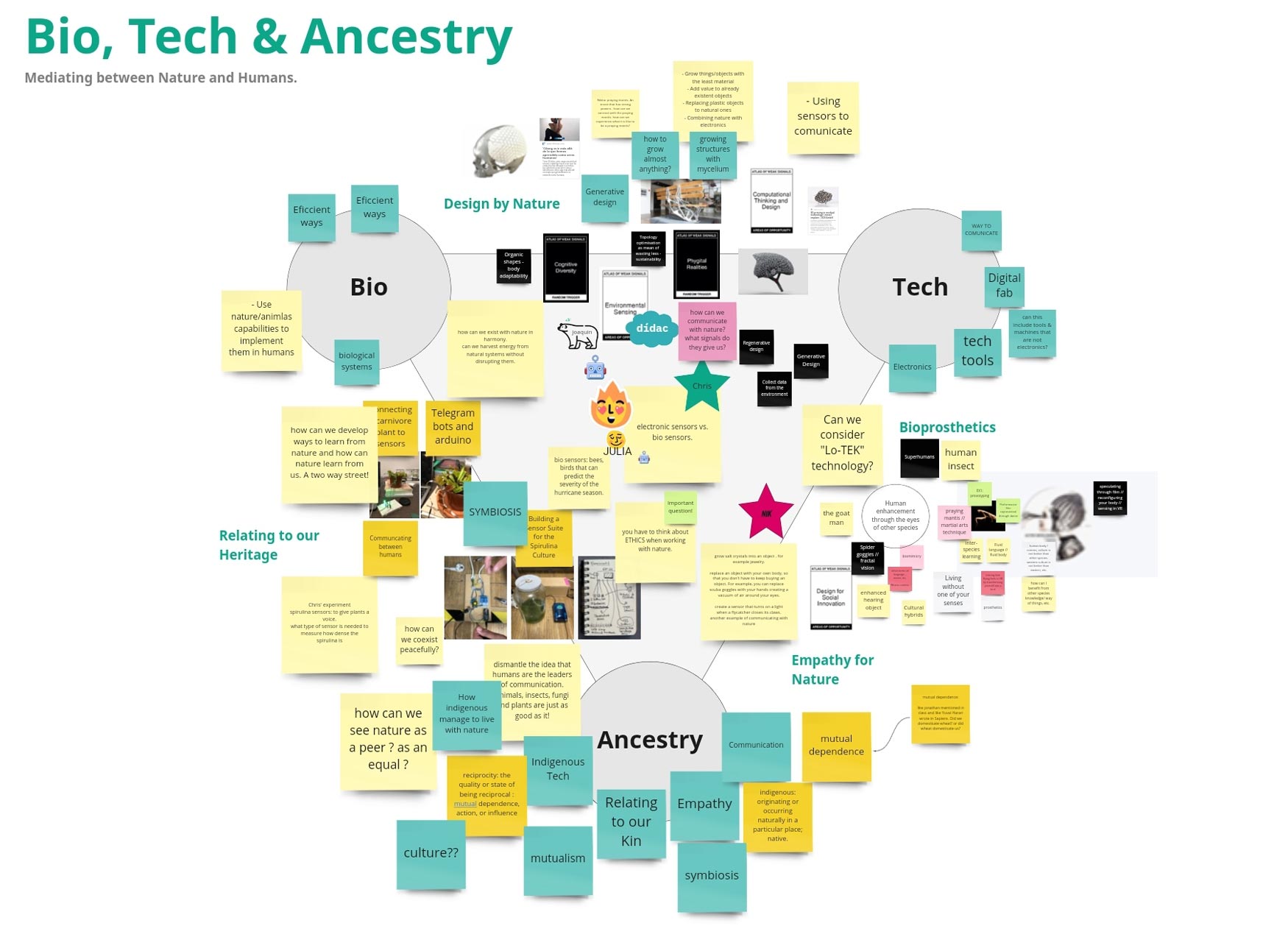/personal_development_plan
(10_october_2021)
In this first task I will create my own development plan based on the
instructions and the work done during the first Design Studio class, starting
by giving a vision of the future taking into account the poster of the first day,
and ending by making a draft of what my plan could be.
.vision_of_the_future
As I have explained in class and in the weekly relfections, my main fight is based
on empathy. Today, our society has many problems because people forget about this value.
No one puts his/herself in other people's shoes and everyone looks after the own interests.
Many things would change if people would try to understand the realities of others,
the situations they have to live through, the issues some people have to put up with.
With empathy, wealth would be distributed in a better way, nobody would judge those outside
the standards, we would all think more about our environment and society would work much
smoothly.
As a designer, I want to bring the concept to my field. I believe that good
design only makes sense if it is empathetic, if it has a function to improve living
conditions, if it is capable of helping. And don't get me wrong, design based only on aesthetics
is a relevant art form but, from my perspective, form always has to be
tied to function, and this has to be the main goal.

If every designer was now focused on creating with empathy, the future society would be nothing like today's. In the end, our creations are what define our environment, and the more empathetic our environment is, the more empathetic we will be.
.personal_development_plan_process
In this second part of the assignment I have been developing the process of analysis and reflection on myself and my expectations for this master's degree. As you can see in the diagram below, this process consists of 4 steps. The first two are the result of the work we did in the first Design Studio session and two others come out of the subsequent personal work. The subjects developed in this diagram are the following:
2. Concepts that caught the attention from my classmates after doing the meetings and talking about our skills, knowledge and attitude.
3. Desired professional identity based on my vision and on the conversations with my classmates.
4. What I want to learn from the courses I will take during this master's degree.
.png)
.personal_development_plan_draft
I would like to focus my strong personal development plan on the idea I had when I decided
to choose this master's degree, which was to discover new fields and explore many
different areas. My intention was to improve my resources as a maker, learning more
about electronics and programming, materials and prototyping machines. However, after
these reflections I have realised that I also want to learn about other fields such as
project documentation and communication, working with communities, discovering the world
of AI, biology and agriculture, etc. So my personal development plan will be founded
on getting to know in depth all these topics that I haven't yet had the opportunity to
deal with and then be able to use them in my professional future.
_________________________________________________________________________
/workspace_and_first_intervention
(24_october_2021)
In this week's Design Studio session, Oscar introduced us to the concept of
Research through Design, a research approach that employs methods and processes from
design practice as a research method. We also saw the Workspaces of some alumni of our
master, along with the methodology they applied in their final projects.
In addition to this, we also learned about some of the many prototyping roles that
exist and that are often used in design processes. Each of these roles is used in
different contexts and with very different purposes. They are generally intended as a
way to collect information, although this is not always the ultimate goal. The main
roles presented were the following:
2. Prototype as a mean of inquiry. Not the definitive prototype but a way to gather information. Not the object you want to design but an object to get data and as much information as possible. Open-ended exploration. The data you collect is qualitative. Empirical.
3. Prototype as a research archetype. Physical embodiments of concepts, understandings or design spaces that can be argued to constitute contributions to the discipline. The role is exemplary. It shows the possibilities of a topic.
4. Prototype as a vehicle for inquiry. The process is documented and the research contribution is not tied to the artefact but to the process and how the artefact was crafted. Not testing, not trying to get anything, just a way to set a reference of what you did.
.creating_a_workspace
This week's task consisted of analysing the resources we have at our disposal for
the project, considering infrastructure, materials, tools and people, and then creating
our own Workspace related to our personal development plan. In addition to this, I have
started a new Design Space from scratch, with a totally different theme. Thanks to the
work done during the previous week, I realised that the Weak Signals I had originally
chosen did not motivate me enough. With this in mind, I decided to start again and I
feel the concepts and ideas I have now are closer to what I want to do this year.
The Workspace I show below already contains the resources related to my new Design
Space. This is the result of this reflection:
.png)
.adding_roles_of_prototyping
In this second part of the exercise, I have added in my Design Space some of the
prototyping roles previously discussed, relating them to my context and to the
resources shown in my workspace. The fact that I have recently changed my design
space has not helped much in this part of the work since I feel that I need a little
more time to make some research and to dive into the new chosen topic.
This is how my Design Space looks like after adding the prototyping roles with the
first ideas that came to my mind:

.first_experiment
This last part of the task consisted in performing a first experiment, based on one
or more of the prototyping roles. In my case, I have chosen to use the
role number one on the list (prototype as an experimental component) in order to make
a first test related to my Design Space and my project.
For this experiment I used Fusion 360 to carry out a first test on topological
optimisation in 3D printing. I modelled a very simple part where I applied some
forces and after doing the structural analysis I used the generative design tool
to optimize the part and leave only the necessary material so that the part can
withstand the same stresses. In this case, the optimized topology's mass was only
the 60% of the non-optimized one.


Finally I printed the two parts, the non-optimised one and the optimised one, and
made an initial strength test with the resources I had at home and trying to apply
the same forces that I had established in the previous structural analysis.
The purpose of this exercise was to check if 3D printing, in this case FDM, can be a
suitable medium to develop generative design and topological optimisation projects,
two of the main topics of my Design Space and with which I would like to work more in
depth. The next step would be to create a more complex and organic shape and see if 3D
printing is still a possible manufacturing method in this process.
_________________________________________________________________________
/collaborative_design_spaces
(31_october_2021)
In this Design Studio session we again worked on Collaborative Design Spaces. The
intention of continuing to operate in this way is to be able to contemplate beyond
our spaces, visualising and sharing concepts that can extend our knowledge and even
connect our projects with other ideas from our classmates. Since I modified the Design
Space completely, the groups I was in previously no longer corresponded to the subject
matter, so I joined another group that incorporated very different visions and projects.
Regarding the Collaborative Design Space, we decided to modify the one already created
from the previous session, as members and topics had changed, and grouped them as "Bio,
Tech and Ancestry". In discussion, we felt that these three concepts generally grouped
together, in one way or another, the concepts of our projects. The Bio part encompasses
everything related to nature and living things, organic forms and biomaterials. Technology
refers to electronics and mechanics, but also to innovation techniques and processes.
Finally, Ancestry groups the ideas of connection with the past or with other species,
it also relates to empathy and the spiritual part.

Starting from this scenario, Oscar asked us to situate ourselves within the
Collaborative Design Space, defining with which parts of it our project is linked
and our future perspectives around it. In my case, my project would be fundamentally
situated between Bio and Tech. As I already defined in my second Design Space, my
main objective right now is to achieve organic shapes, perhaps adapted to the human
body, modelled with generative design and topological optimisation and also adding
some electronic coponents. This idea is a clear mix of these two concepts, the study
of human biology and natural forms with 3D design technology that allows you to
obtain computationally developed models and the electronics. Even so, given that I
want to give a social sense to my project, the fact of also incorporating Ancestry
in the design space has worked very well for me to relate it to empathy and values.
Concerning the projects of the other members of the group, I found some of the ideas
very interesting:
- Juaco's experiment he did with carnivorous plants, where he put conductive elements in both parts of the "mouth" and when it closed, the circuit also closed and emitted a signal. I found this combination of nature and electronics fascinating.
- Nikita's topic was really appealing, the fact of analysing the characteristics of other species of animals and plants and then seeing how they could be applied to human lives to improve them, even at a societal level.
_________________________________________________________________________
/documenting_and_communicating
(21_november_2021)
In this Design Studio session, Kate Armstrong introduced Documentation beyond
presentation. She explained how the two concepts have to be separated, and that
in the end documentation does not understand presentation. Documentation is a
process of exploration, a way of connecting with people, a way of discovering and
discovering oneself, a way of teaching a process, etc. It is also storytelling, it
is the whole experience of what we do told either with photos, videos, or any other
resource.
On the other hand we also talk about communication and the importance it has when
we are documenting something. Our way of communicating with other people is an
extension of who we are and we have to find a way of expressing and showing our
ideas that we can identify with. Communication is always most effective when it tells
the whole story, when you can put yourself in the other person's shoes and when it
provokes a feeling and conveys a message.
During the session we did two short activities to experiment with documentation.
The first activity consisted of using some props we were given to attach the camera
to some part of our bodies and record an interview with another person. The intention
was to give another approach to the traditional way of using cameras and to experience
the feeling of recording in unconventional positions.
For the second activity, Kate sent us audios with instructions and we went to explore
the surroundings of IAAC. These audios explained different concepts to look for and
from there we had to document what we saw and perceived in our surroundings. In my
case, my subject was shapes and I had to draw and describe some volumes or flat forms
that I had in front of me at that moment.

.reflecting_about_my_documentation
Throughout this Master's course, I think my way of documenting everything we have
done has been quite pragmatic. I have been practical and explanatory with all the
activities we have done and I have generally documented everything with photographs,
videos and text. Still, I think I should go a bit further and use my creativity and
inventiveness to document in a more alternative and experimental way. I have to try
to reduce the engineering facet of my work and to enhance the design and art part.
I also want to learn to transmit emotions and sensations with my creations, and that
everything is part of a well elaborated storytelling.
For years, I have been interested in documentation, especially in engineering and
design projects. I follow some YouTube channels where this process is highly
elaborated and where the project they develop is valued as much as the video itself.
They manage to make watching their projects a visual pleasure for the viewer. This
would be my goal.
.documenting_tech_beyond_the_myth
To conclude this Design Studio session, Kate asked us to document the two weeks of
the Tech Beyond the Myth course in any way we wanted, but being creative and
experimental. This is the result of my documentation:
_________________________________________________________________________
/collective_design_intervention
(12_december_2021)
For the final Design Dialogues event at the end of term 1, Joaquin, Chris and I teamed
up for the accompanying design intervention. We are interested in the intersection
between music, collaborative jamming, nature and how these things can be combined.
We wanted to research how engaging in an intimate collaborative setting with plants
could foster a meaningful inter-species connections. For that, we decided to enable
an inter-species jam session, where the plants would be both musicians and instruments.
In order to see the whole content of the project, please check the website
www.plant-b.io.
.first_tests
With the help of the MakeyMakey, some plants from the Fab Lab office and
Ableton Live, we managed to get a first minimal viable product for a few classmates to test out.
We managed to extract some interesting insights from these experiments. First of all,
it was intriguing to see how the sounds produced did not only dramatically change the
perception of the users towards this plant, but also the interaction that comes with
it. From slight touching and caressing to pinching and hitting the plant, a wide range
of interactions could be observed just by linking different sounds to the individual
plants.
Secondly, the perception of the experiment as a whole changed according to what
musical mood we were aiming for: There proved to be a much different vibe between
mysterious, atmospheric synthesizer and bell chimes samples on the one hand and some
pulsing electronic lead synths on the other hand - while one made our test users connect
to the plant on a emotional level, the driving electronic rhythms resonated with our test
subjects on a more physical level. Hereunder a video from the experiment:
.getting_ready
For the preparation of the intervention we split the work between the tree of us, each
taking charge of a different component of the final product. That meant figuring out the
electronics, designing and building the plant boxes and doing the sound design for the plants.
Throughout the process of making and developing our scenario, we kept changing ideas
and details that we had previously considered. It was a process of discovery and also
of adapting to the time we had, iterating on design and operation. The changes were
mainly due to the fact that we were more and more clear about what we wanted to
transmit and how we wanted to do it, an aspect that was obviously not very clear
at the beginning.
In the end we achieved an attractive look and feel that communicated the idea and
emotions we wanted, while at the same time the interaction was meaningful and fun.
This is the video of the development of the final product:
.the_intervention
The response to our intervention was overwhelming and for all of us everything but anticipated.
As it can be seen in the pictures and the video below, we were fortunate to witness some very
special moments of intimate interactions between passersby and plants to make music together.
Especially children were absolutely enchanted by the concept of singing plants and were the most
fearless when it came to interacting with the plants. Often, adults would be shy at first - but
after inviting them in to join, they usually lost their initial hesitancy. Throughout all ages
and genders, people were amazed by this way of interacting with plants, which was new for almost
all of them.
People touched the plants softly, with respect, caressing them to test out the different sounds.
Quickly, people understood the basic logic of the setup and how a circuit was closed to trigger
the sounds. From there, it often took just a single comment about the conductivity of the human
skin in order to start people holding hands while making music. By doing that, they were able to
multiply the amount of touch points with the plants and through that, were able to create much more
complex soundscapes. These were the moments when we were sure to have enabled a rare moment of
collaboration, not just between people but between two species.
Reflecting on the intervention with some distance, our most important goal was achieved, which
was placing plants front and center in the interactions. In our experiment they were the integral
part, to which the other components, music and technology, connected. This sparked many interesting
conversations, which revolved around connecting to plants, how plants perceive touch, how plants
react to the music we play and how plants feel in a profound way. Using music as a vehicle for
creating empathy for other organisms to inspire inter-species collaboration proves to be a promising
idea.
_________________________________________________________________________
/my_fight_updated
(19_december_2021)
In preparation for Design Dialogues we had to do an update of our poster we made at
the beginning of the term related to our struggles. In my case, this was an opportunity
to reflect on what I had been working on so far and whether or not I liked the path I
was taking for my final master's project.
During these three months I think my interests have been changing a lot and I still
haven't found the topics I would like to work on from now on. I developed a first Design
Space about the rural world that didn't convince me and I changed it completely. Then I
started another Design Space related to wearables and prosthetics and now I don't see
very clearly that this is the path I want to follow.
I'm constantly rethinking my interests and the problem is that they are obviously
changing as I learn and evolve throughout this master's degree. This, even though it
is a problem given that in some things I fall behind and I can't teach how my work is
going because it simply doesn't go, it is also making me learn and I am understanding
that whatever I do in the future has to be something I enjoy, something that makes me
feel good and that I can learn about different fields.

Also, thanks to the Plant B project, I have been able to see that what I really like
is making things with my own hands, making with different machines and processes,
designing scenarios and projects that look good and have a use.
On the other hand, I have realised that giving a second life to an object that is
worn out or broken is something that I really like, and that it can also help to
extend the life of something that was previously considered rubbish.
Finally, I want to keep exploring technology in all its meanings, I want to work
with generative design and Grasshopper, I want to play with the machines in the labs
of ELISAVA and FabLab, and I want to learn about electronics and programming, going
beyond the typical exercises to make something applied and useful.
I know that there is a lot of work to do and that it is not going to be easy, that's
why I wanted to show this kind of labyrinth in the centre of my poster, and that I
have many things in mind, but I know that I always end up finding the way and that in
the end I will be happy and I will feel fulfilled with what I do. So let's get on with
it!
_________________________________________________________________________
/thesis_draft_chapters_0-3
(10_january_2022)
Concluding this first semester of Design Studio, we were told to submit a Thesis Draft
of the chapters 0 to 3. This draft is a summary of everything we've been doing at Design
Studio sessions including my fight, the personal development plan, research through design,
Design Spaces and State of the Art and finally all the experiments and interventions related
to our project we've been working on. This is the result of this recollection: